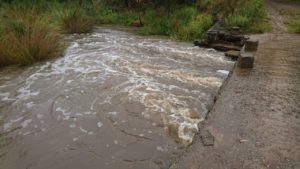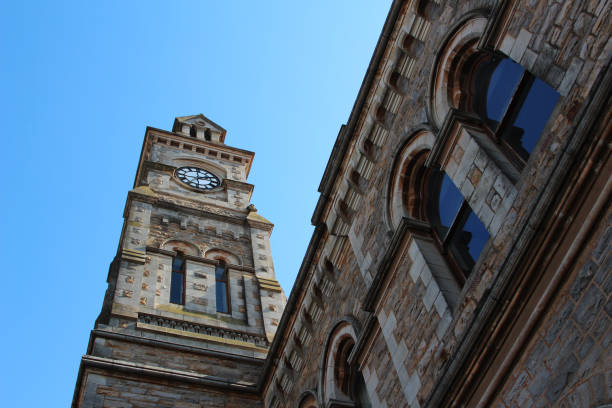
As the country woke up to winter-like temperatures on Thursday, the South African Weather Services (SAWS) issued a special weather advisory for heavy rain and even snow in some parts of the country. Meanwhile, rain in the Grahamstown area has seen water once again flow into Howieson’s Poort dam.
Heavy rain leading to flooding is expected in places over the eastern parts of the Eastern Cape and southern parts of KwaZulu-Natal.
Also, snowfalls are expected over the Sneeuberg and Winterberg mountains.
The Weather Services said an intense upper air trough is expected to affect the Western Cape, Eastern Cape, KwaZulu-Natal, Free State, and Mpumalanga.
The public and small stock farmers are advised of heavy rainfall in the Wild Coast and adjacent midlands and very cold conditions are expected over the northern interior of the Eastern Cape.
In and around Grahamstown this week, Grocott’s Mail’s rain team measured from 66mm in Sunnyside to 87mm in Rivendell for the week of 9-15 November, with Nick James sharing images of water flowing into Howieson’s Poort dam, Grahamstown’s western water source.
Makana Municipality reported on 13 November that Howieson’s was at 53%. However, Settlers remaind at 15%. Botha’s Hill reservoir serving Joza, which was emptied by last week’s pump station breakdown, was 70% full and James Kleynhans was operational again.
The Department of Water and Sanitation reported on Tuesday that dam levels in the Eastern Cape continue to decline, currently at an average of 58.5%.
The Algoa System with five dams serving the Nelson Mandela Bay had registered a drop from 29.6 % to 28.6% this week. Amatola with six dams serving the Buffalo City declined from 68.6% to 67.6 % this week.
The DWS saw an improvement on the Gcuwa dam, this week sitting at 100%, a huge gain of 56.9% from last year’s 43.1% this time. Xilinxa dam was decreasing rapidly and was at 5.7%. The Mthatha Dam and Mhlahlane were the only dams that are remained stable at 100%, while Nqadu Dam had dropped to 31.6 %.



